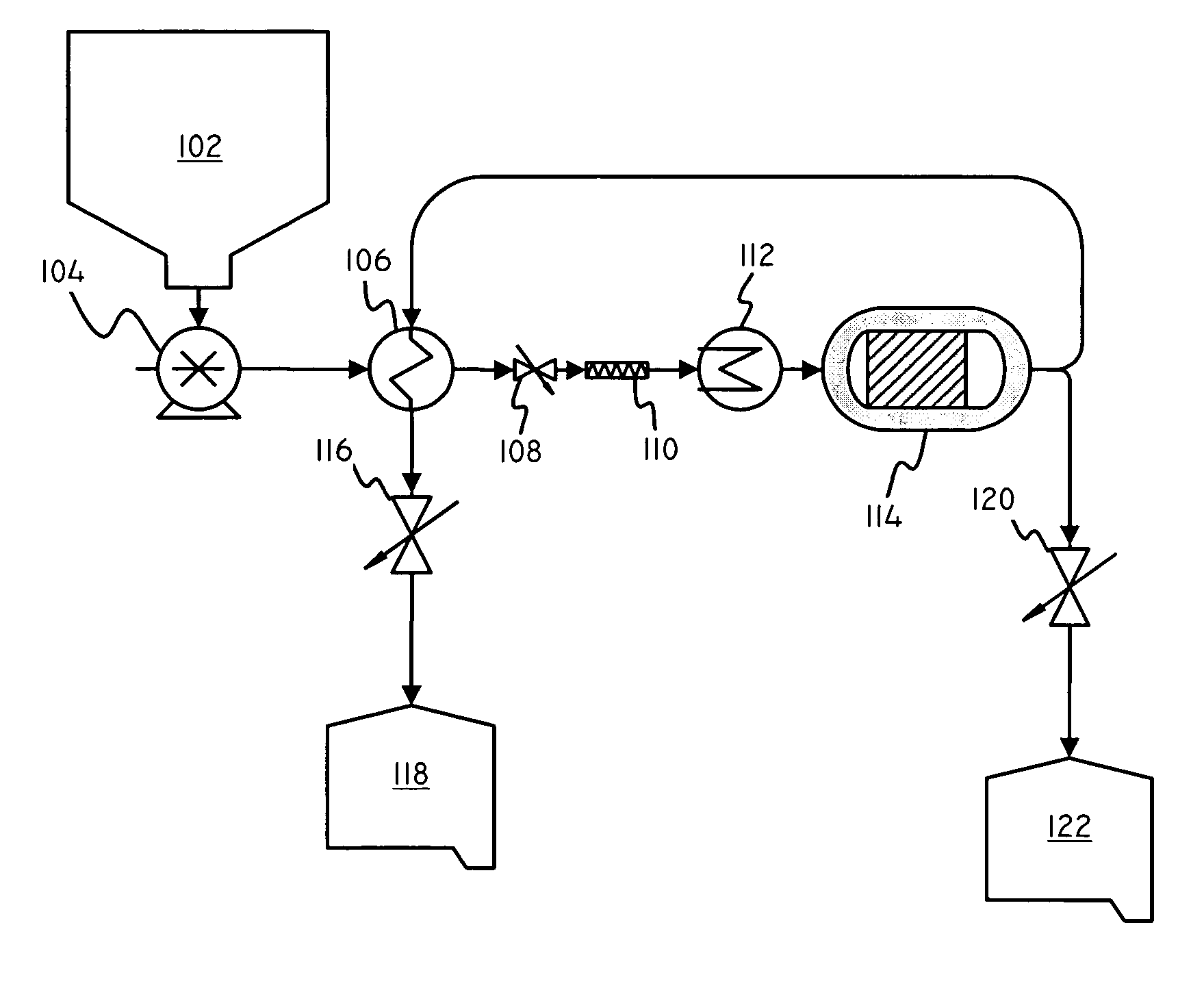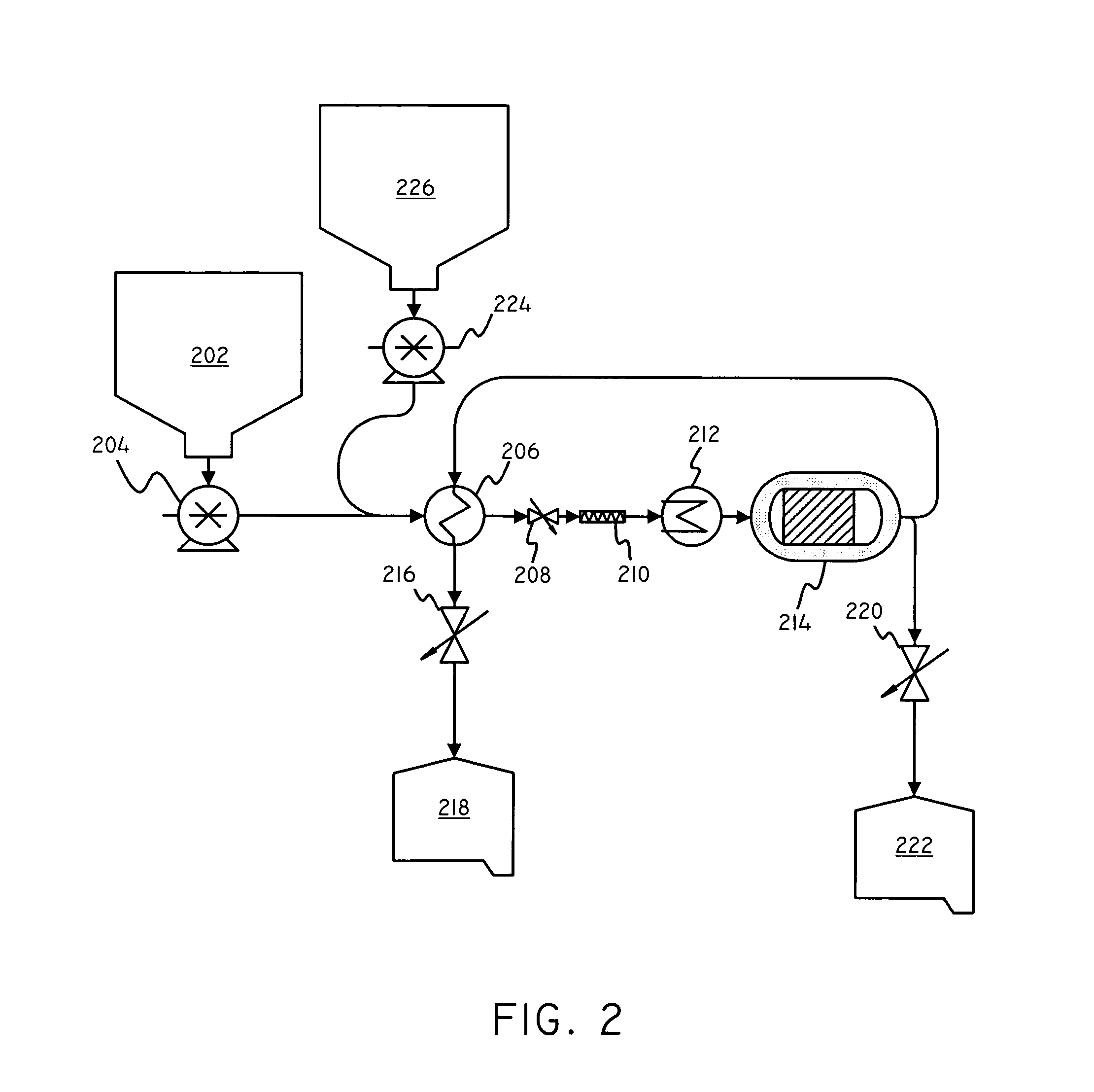Catalysts, systems and methods for ether synthesis
a catalyst and ether technology, applied in the field of catalysts for synthesizing ethers, can solve the problems of increasing the cost of equipment used in reaction, and increasing the cost of equipmen
- Summary
- Abstract
- Description
- Claims
- Application Information
AI Technical Summary
Problems solved by technology
Method used
Image
Examples
example 1
Formation of Base Modified Titania Particles
[0069]700 mL of 1.0 M sodium hydroxide was placed in a 2 liter plastic Erlenmeyer flask. 110 g of 80 μm diameter (60 Angstrom average pore diameter) bare titania (commercially available from ZirChrom Separations, Inc., Anoka, Minn.) was added to the flask. The particle suspension was sonicated for 10 minutes under vacuum and then swirled for 2 hours at ambient temperature. The particles were then allowed to settle and the alkaline solution was decanted and then 1.4 liters of HPLC-grade water was added to the flask followed by settling and decanting. Then 200 mL of HPLC-grade water was added to the flask and the particles were collected on a Millipore nylon filter with 0.45 micron pores. The collected particles were then washed with 2 aliquots of 200 mL HPLC-grade water followed by 3 aliquots of 200 mL of HPLC-grade methanol. Air was then allowed to pass through the particles until they were free-flowing.
example 2
Formation of a Packed Column
[0070]Particles as formed in Example 1 were dry packed into two 10.0 mm i.d.×15 cm stainless steel reactor tubes. Each tube contained 16.3 g of the base modified titania.
example 3
Synthesis of Ether from Methanol
[0071]A reactor system was set up as shown in FIG. 4. The system included one high-pressure pump 404 (Waters 590 programmable pump) connected to a methanol reservoir 402 that was continuously sparged with nitrogen to remove dissolved oxygen from the methanol feedstock. The methanol was then pumped into a heat exchanger 406 where heat from the hot from the fixed bed catalytic reactor 410 was exchanged with the incoming stream of methanol. The fixed bed catalytic reactor 410 was a 10 mm i.d.×15 cm column packed with base modified titania, prepared as described in example 2 above. After the heat exchanger 406, the methanol passed through a preheater 408 capable of bringing the mixture to the desired set point temperature before it entered the fixed bed catalytic reactor 410. The reactor 410 included an independent thermostat. The backpressure of the system was maintained through the use of a backpressure regulator 412.
[0072]After passing through the heat...
PUM
| Property | Measurement | Unit |
|---|---|---|
| temperature | aaaaa | aaaaa |
| temperature | aaaaa | aaaaa |
| pressure | aaaaa | aaaaa |
Abstract
Description
Claims
Application Information
 Login to View More
Login to View More - R&D
- Intellectual Property
- Life Sciences
- Materials
- Tech Scout
- Unparalleled Data Quality
- Higher Quality Content
- 60% Fewer Hallucinations
Browse by: Latest US Patents, China's latest patents, Technical Efficacy Thesaurus, Application Domain, Technology Topic, Popular Technical Reports.
© 2025 PatSnap. All rights reserved.Legal|Privacy policy|Modern Slavery Act Transparency Statement|Sitemap|About US| Contact US: help@patsnap.com



